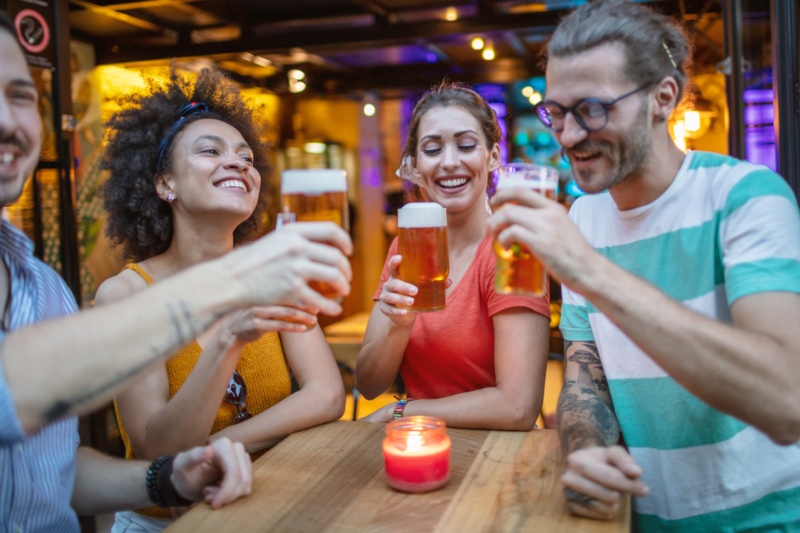Young adults’ alcohol use increases when casually dating

When young adults are more interested in socializing and casually dating, they tend to drink more alcohol, according to a new paper led by a Washington State University professor.
On the other hand, scientists found that when young adults are in serious relationships, are not interested in dating or place less importance on friendship, their alcohol use was significantly lower.
Published June 15 in the journal Substance Use & Misuse, the study included more than 700 people in the Seattle area aged 18-25 who filled out surveys every month for two years. The study used a community sample that was not limited to college students.
“Young adults shift so much in terms of social relationships that having this monthly data really allowed us to hone in on nuances and see these changes in alcohol use depending on social situations,” said Jennifer Duckworth, the lead author on the paper. “The idea is to understand whether young adults may be viewing alcohol as a way to facilitate relationships. They may think of alcohol as a way to make hanging out easier or more fun.”
Being able to look at young adult behavior over a longer period allowed the research team to see how alcohol use was related to socializing and relationships.
“If a college student has mid-terms, they may have less interest in spending time with friends,” said Duckworth, an assistant professor in WSU’s Department of Human Development. “But if it’s spring break, they may place more importance on those friendships. And when friendships become more important, we found alcohol use tends to be higher.”
For relationships, Duckworth and her co-authors separated single young adults into two groups: casually dating and not interesting in dating. That distinction showed a significant difference in alcohol use. Since the survey tracked people every month, they could study changes as participants moved in and out of different relationship statuses.
“For instance, one month, someone may not be interested in dating and their alcohol use tended to be lower,” Duckworth said. “Then, if they start dating, alcohol use tended to be higher.”
Previous research has shown that young adults in relationships tend to drink less than single people, but those studies didn’t separate the term single into two separate groups based on whether or not the young adults were interested in dating.
Young adults have more high-risk alcohol use than any other age group, she said. The overall goal of this research is to understand the context for greater alcohol use by young adults.
“Understanding what’s going on in their lives across time is very useful if we want to mitigate high-risk use of alcohol,” Duckworth said. “We can focus on interventions that help educate young adults on what is motivating their behaviors. We’re bridging alcohol use with development research in a meaningful way that can really help people.”
The young adults in the study filled out confidential monthly online surveys and received a stipend at the end of the two-year study. That combination of confidentiality, financial incentive and ease of use led to a very high retention rate, Duckworth said.
Co-authors on the paper were principal investigator Christine M. Lee, Isaac Rhew, and Anne Fairlie at the University of Washington, Megan Patrick and John Schulenberg at the University of Michigan and Jennifer L. Maggs at Pennsylvania State University.
The National Institute on Alcohol Abuse and Alcoholism (R01AA022087) provided funding for the study.

 China
China